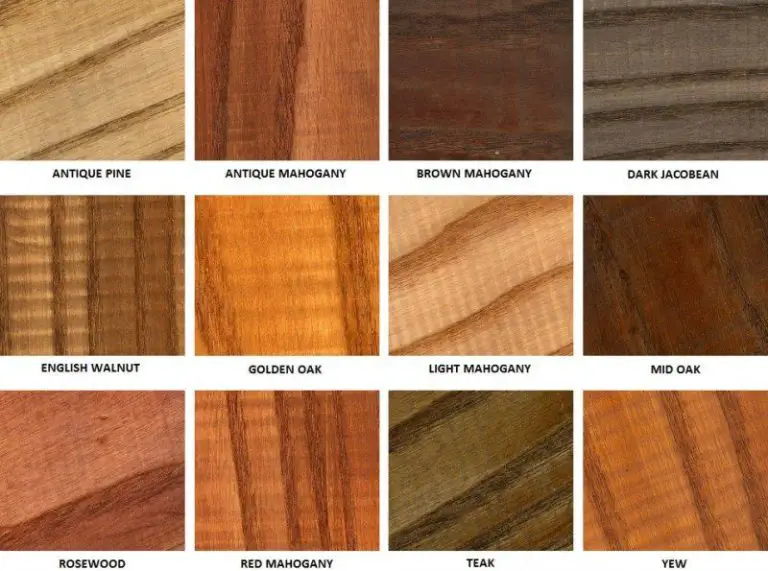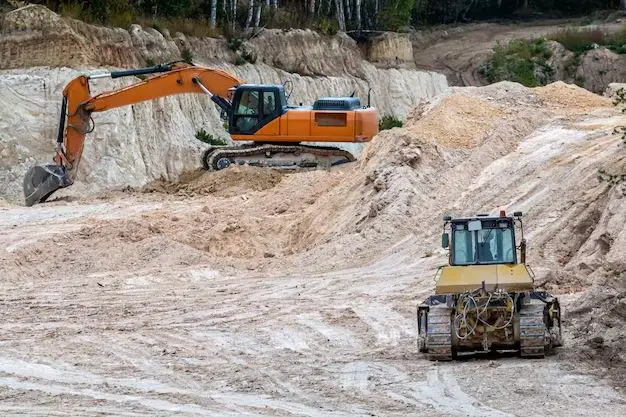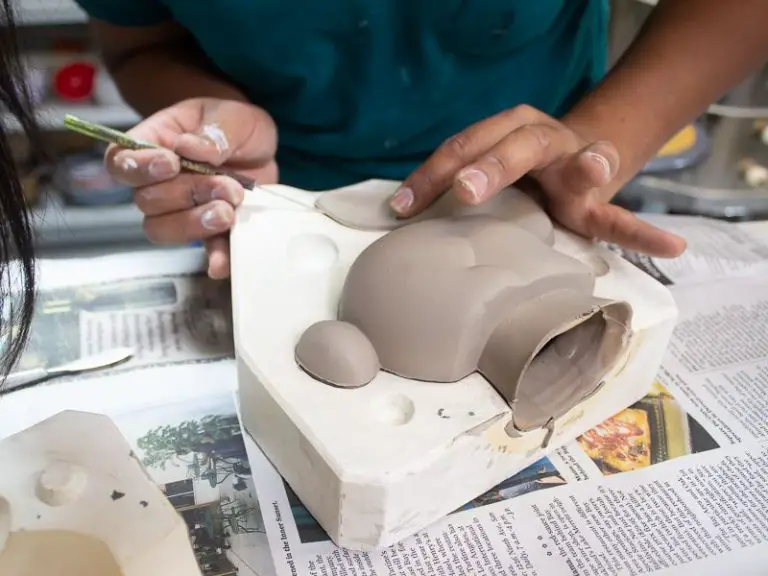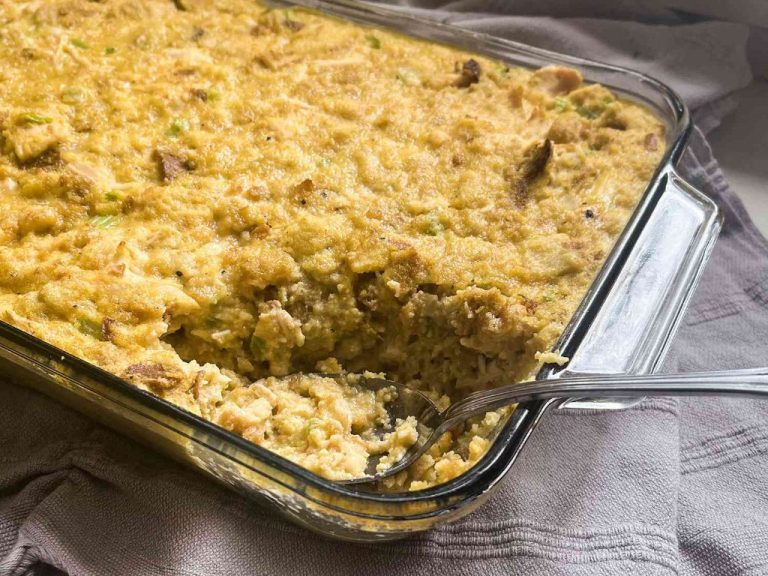What Material Is Added To Clay For Strengthening?
Clay is a versatile material that has been used for pottery, sculpture, and construction for thousands of years. The natural plasticity of clay allows it to be molded into nearly any shape. However, clay also has some limitations. In its natural state, clay lacks strength and durability. When fired, pure clay can become brittle and prone to cracking and breaking. To improve the physical properties of clay, potters and ceramic artists often add other materials to reinforce the clay body.
Adding certain inert materials to clay can enhance its workability, strength, and resistance to thermal shock. These additives, called tempers, create a more durable ceramic matrix when the clay is fired. Tempers reduce cracking and warping by moderating shrinkage rates as the clay dries and becomes vitrified in the kiln. This allows the development of larger, thinner, and more intricate forms. The use of tempers stretches back to the very beginnings of pottery and continues today. Let’s take a look at some of the common tempering materials added to clay and how they affect its properties.
Organic Materials
Certain organic materials can be added to clay to strengthen it during the firing process. Some common organic materials used are straw, hair, and manure.
Straw is often chopped up into small pieces and mixed directly into the clay. As the clay is fired, the straw burns away, leaving small voids in the clay body. This creates a more porous structure, improving the clay’s insulating properties. Straw fibers also reinforce the clay, reducing cracking and helping the clay maintain its shape.
Animal hair such as horse, goat, or cow hair can also be incorporated into clay. The proteins in hair burn out during firing, creating fine crackling effects in the surface of the finished ceramic piece. This can add interesting visual texture. The hollow tubular structure of hairs provides paths for expanding gases to escape, reducing cracking and explosions during firing.
Manure from cows and other livestock is another traditional material used to temper and strengthen clay. The organic matter burns away during firing, leaving tiny pores and improving thermal shock resistance. Manure firing also contributes minerals back into the clay body, enhancing durability. However, special care must be taken when working with manure to avoid contamination.
Sand
Sand is the most common additive used to strengthen clay. It comes in different types like silica sand, quartz sand, feldspar sand, and zircon sand. Each type has its own properties and effects on clay. The particle size and angularity of sand grains provide reinforcement and prevent clay shrinkage and cracking during drying and firing.
Typically, sand is added to clay bodies at 10-20% by weight, but up to 30% can be used for highly sandy bodies. Coarser sands are better for abrasion resistance in functional wares like mortars. Finer sands minimize shrinkage in dry or thinly potted wares. Too much sand can decrease plasticity and increase drying time and firing shrinkage. The sand composition and particle size distribution need to be considered together to create the desired effects in the clay body.
Grog
Grog refers to crushed bisque or fired clay that is added to clay to strengthen it. It is made by simply taking unfired clay pieces, bisque ware, or fired ceramics and crushing them into a powder or coarse grains. Grog offers the following benefits as an additive to clay:
- Improves strength and durability – Adding grog creates a more dense and less porous clay body that can withstand higher firing temperatures without warping or cracking.
- Aids drying and prevents cracking – The grog particles help spaces for air in the clay so it can dry evenly without cracks.
- Recycles clay scraps – Grog provides a great way to reuse leftover clay bits, broken greenware, bisque shards, etc. It reduces waste in the studio.
- Adds texture – Grog can create more texture and visual interest in the final surface.
Grog is ideal for sculptural and functional clay bodies that require high strength like stoneware and porcelain. Up to 25% grog can be added, but typically 5-15% is sufficient. A higher grog percentage results in a more coarse, earthy look and feel. The particle size of the grog can also vary from fine grains up to large coarse bits depending on the desired effect.
Vermiculite
Vermiculite is a natural clay mineral that expands when heated. The expansion is due to water molecules between the layers of vermiculite vaporizing and forcing the flakes to expand like popcorns. This expansion property makes vermiculite a lightweight and absorbent material. When added to clay bodies, vermiculite improves workability and forming properties. It also reduces shrinkage, prevents cracking and makes the clay more porous.
Vermiculite is mined from deposits formed by the weathering or hydrothermal alteration of biotite or phlogopite. Large commercial vermiculite mines currently exist in South Africa, China, Brazil, Zimbabwe, and Russia. Once mined, the vermiculite ore is milled and screened to create vermiculite concentrate. This concentrate is then quickly heated to around 1000°C to cause expansion. The expanded vermiculite is graded into size fractions.
In ceramics production, expanded vermiculite is added to clay at 5-10% of the total dry weight. The absorbent nature of vermiculite helps to disperse other additives evenly throughout the clay body. The porosity imparted by vermiculite also reduces drying time. It improves the insulation properties of kiln furniture and can be used as a lightweight aggregate in clay construction materials.
Perlite
Perlite is another mineral that is heated at a high temperature until it expands, similar to vermiculite. The main difference between perlite and vermiculite is that perlite starts as a volcanic glass before being heated, while vermiculite starts as a mica mineral. After heating, perlite can expand to 4-20 times its original volume. The resulting lightweight, porous material shares some of the properties of vermiculite that make both useful for clay bodies.
Like vermiculite, perlite is used in clay to introduce air pockets and improve workability. The porous structure helps clay dry faster and more evenly, reducing cracking and warping. Perlite also lightens clay and reduces shrinkage. It improves thermal insulation as well, increasing resistance to thermal shock. Perlite and vermiculite provide similar benefits, so the choice between them usually comes down to availability and cost.
One advantage perlite has over vermiculite is its pure white color. This makes it appealing for use in white or light-colored clay bodies where vermiculite’s brownish flecks may discolor the clay. Perlite is also chemically inert, so it doesn’t affect glazes or interact with clay chemistry beyond providing pores. Typical addition rates are 5-10% by weight, though up to 20% can be used in some applications. As with vermiculite, particle size and addition rate need to be balanced to achieve the desired effect in the clay body.
Calcium Carbonate
Calcium carbonate is an inorganic mineral source commonly derived from natural materials like chalk or limestone. When added to clay bodies, calcium carbonate can influence several characteristics and properties of the final fired ware.
One of the primary effects of calcium carbonate in clay is that it helps promote vitrification and lower the maturation temperature of the clay body. This means wares with added calcium carbonate may fire to maturity and become vitrified at slightly lower kiln temperatures compared to non-calcareous clays.
Calcium carbonate also influences the color and appearance of fired clay. It helps produce lighter colors and increases the opacity and whiteness of clay bodies after firing. The mineral content in calcium carbonate promotes more complete vitrification and glass formation within the clay, resulting in less porous and denser fired pieces with brighter white tones.
In addition to effects on vitrification and color, calcium carbonate can also impact the workability and texture of the clay. It tends to make clay bodies more short and open in texture. The addition of calcium carbonate will reduce the plasticity and dry strength of clay bodies. This can make the clay easier to work with, but too much calcium carbonate could make the clay prone to slumping or distortion during firing.
Talc
Talc is a soft clay mineral that is an excellent material for strengthening clay bodies. It helps improve the plasticity and workability of clay, making it easier to throw on the pottery wheel. Talc also reduces shrinkage and cracking during the drying and firing process.
When added to clay bodies, talc particles get in between the clay platelets. This disrupts the structure and alignment of the clay, increasing plasticity. The small size of talc particles fills spaces between larger particles, resulting in a more dense, less porous clay body. This density reduces shrinkage as excess water evaporates out during drying.
Talc is relatively inert, so it does not chemically react with clay during firing. This makes it stable at high temperatures. Talc has a low coefficient of thermal expansion compared to clay, further helping to minimize shrinkage and cracking.
Talc is mined from talc deposits around the world. Some of the main sources are India, China, Brazil, and the United States. Before use in ceramics, talc ores are crushed into a fine powder. The softness of talc allows it to easily be ground down to small particle sizes ideal for mixing into clay bodies.
Slip
Slip, which is a liquid clay added to clay bodies, has significant effects on plasticity and strength of the finished product. It typically consists of heavily deflocculated clay suspended in water. The deflocculated clay particles distribute evenly throughout the clay body when mixed in, helping fill in voids between larger clay particles. This greatly improves the workability and plasticity of the clay. Slip also binds the clay particles together more tightly during drying and firing, resulting in less shrinkage, reduced cracking, and increased mechanical strength. By adding slip, ceramic artists can achieve desired levels of plasticity and strength while using lower clay percentages in their clay bodies. The higher firing temperatures enabled by lower clay content can allow for more vibrant glaze colors and effects.
Conclusion
There are several materials that can be added to clay to strengthen and improve its properties. The most common materials are sand, grog, vermiculite, perlite, calcium carbonate, talc, and slip. Sand is an inexpensive material that increases the clay’s plasticity and workability. Grog is made from fired clay and helps prevent cracking and control shrinkage. Vermiculite and perlite add porosity to reduce weight while maintaining strength. Calcium carbonate increases workability and firing temperature. Talc is also used to increase workability and plasticity. Slip helps bind particles together. All of these materials have unique properties that potters can leverage to modify the clay for their specific needs.
The key reasons for adding materials to clay are to control shrinkage and cracking during drying and firing, increase porosity and reduce weight, improve workability and plasticity, and increase firing temperature. By testing and combining various materials, potters can create the ideal clay body for any project, from functional tableware to delicate sculptures.




